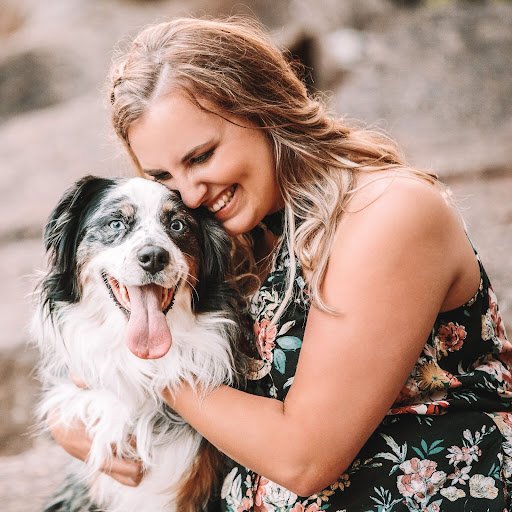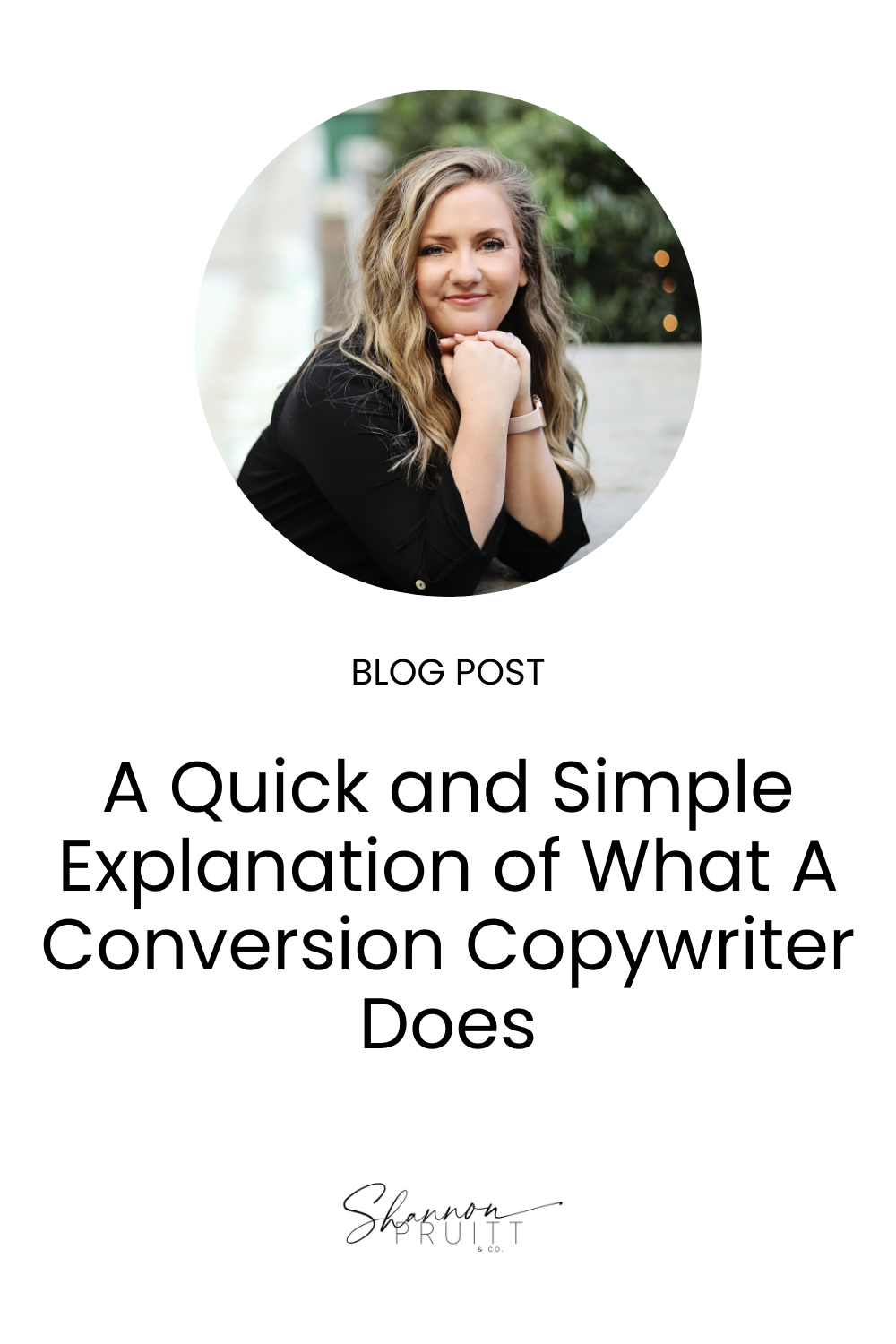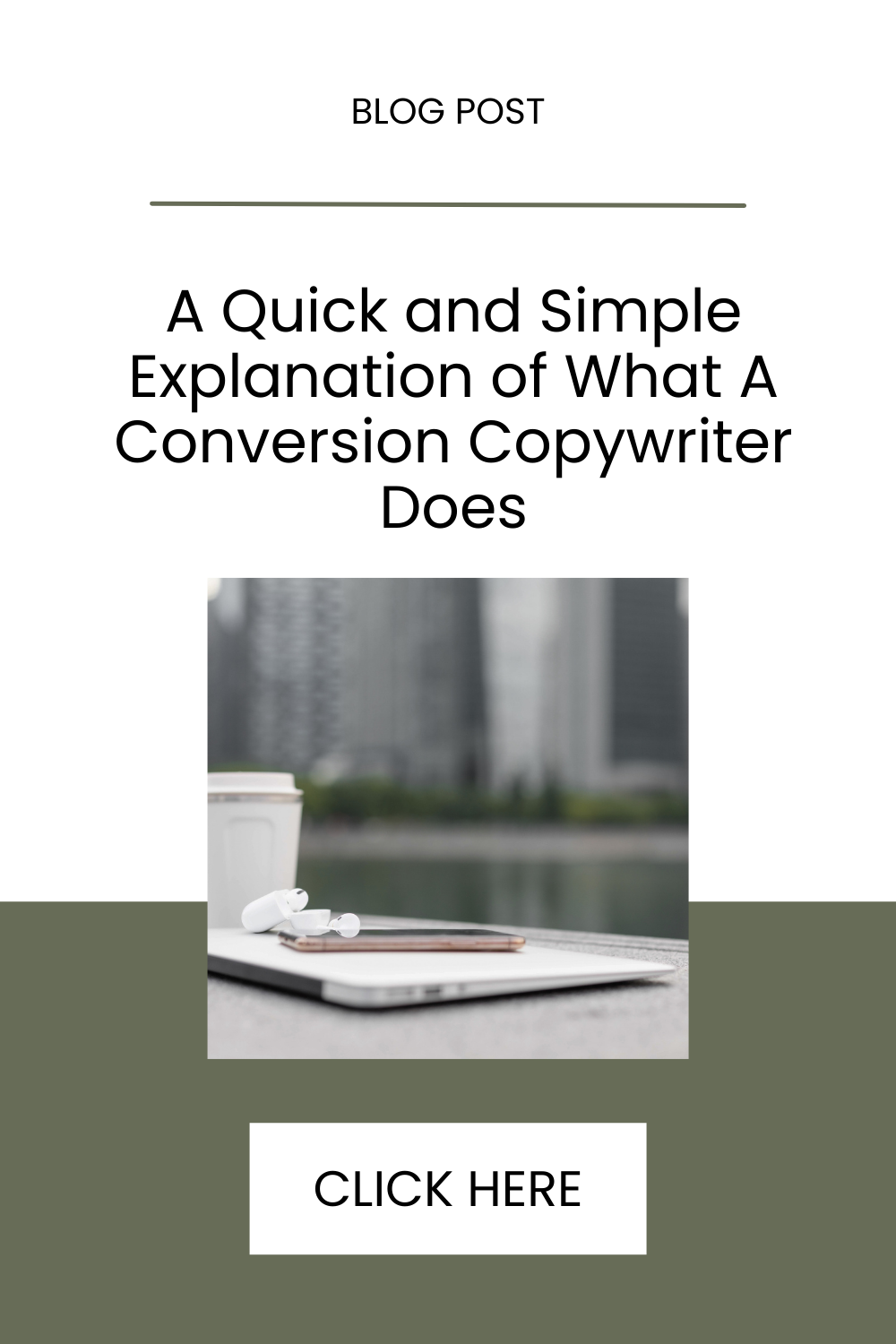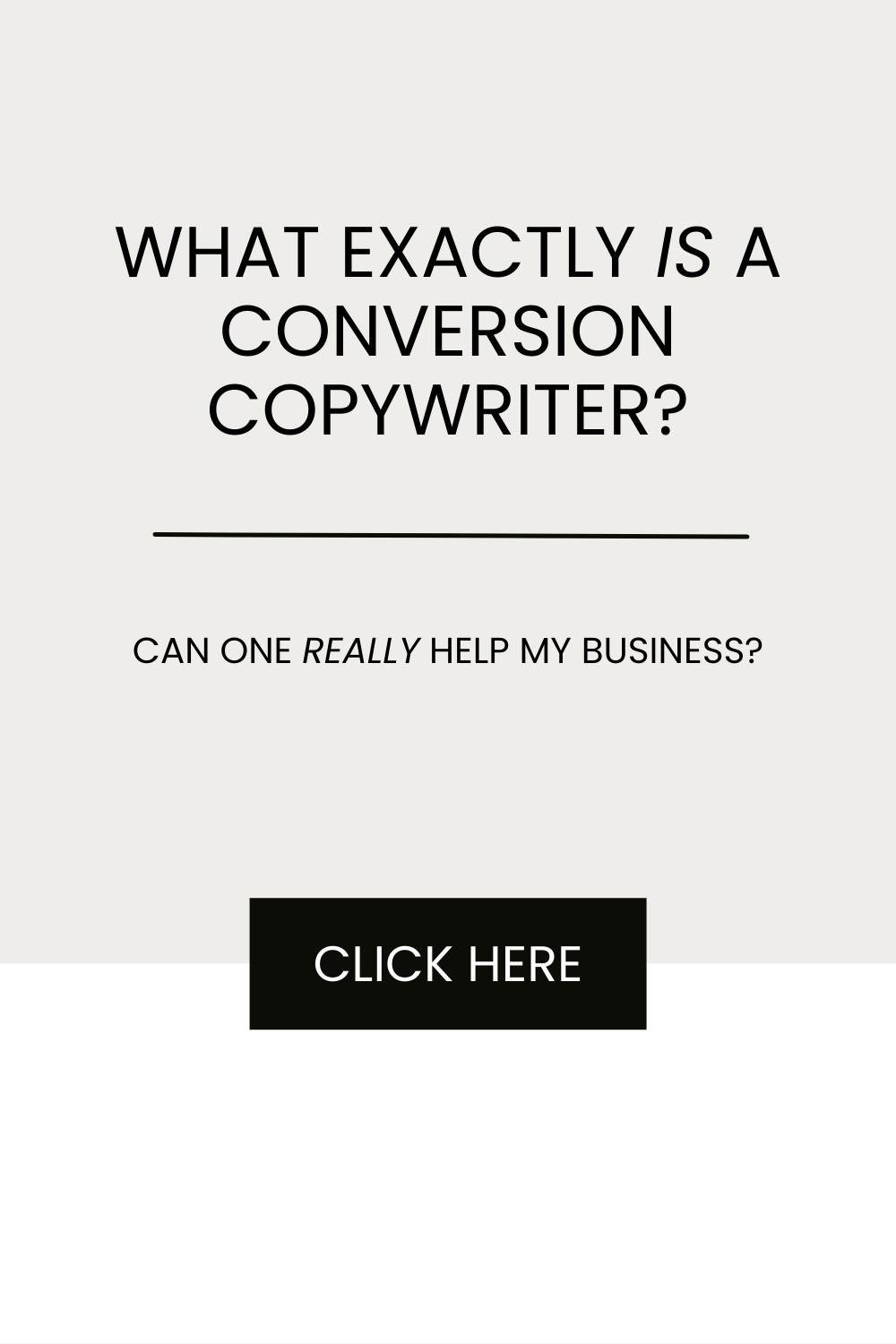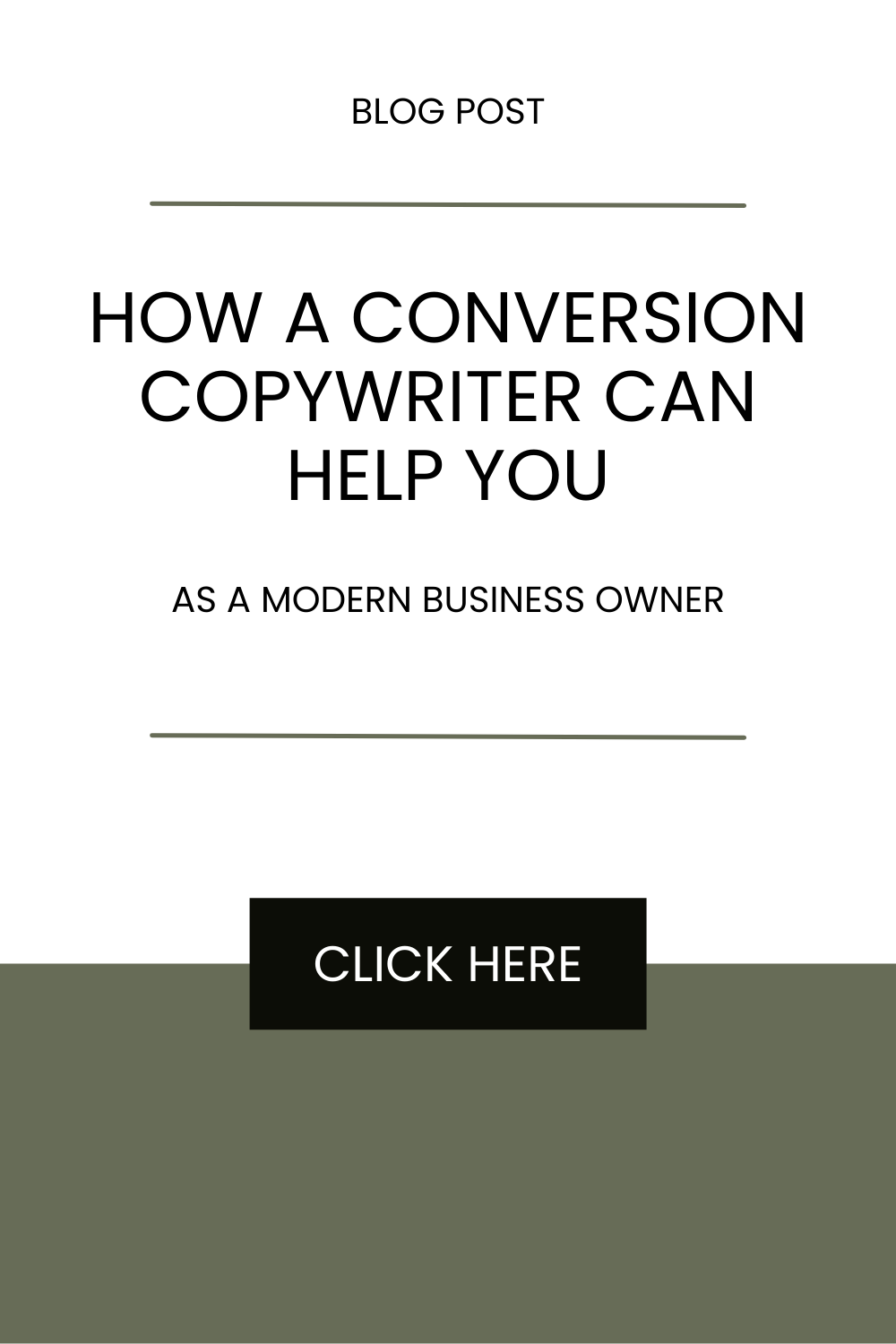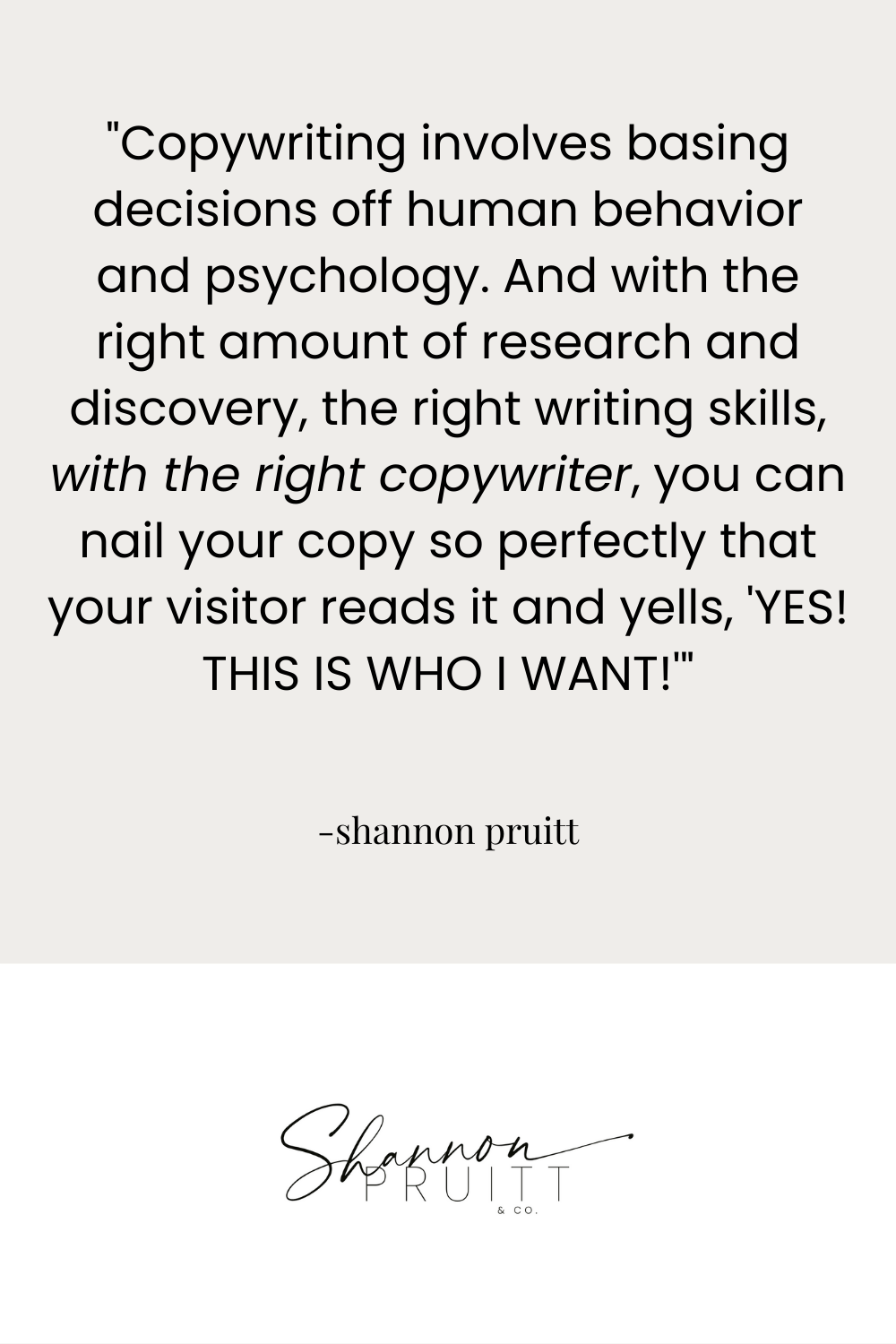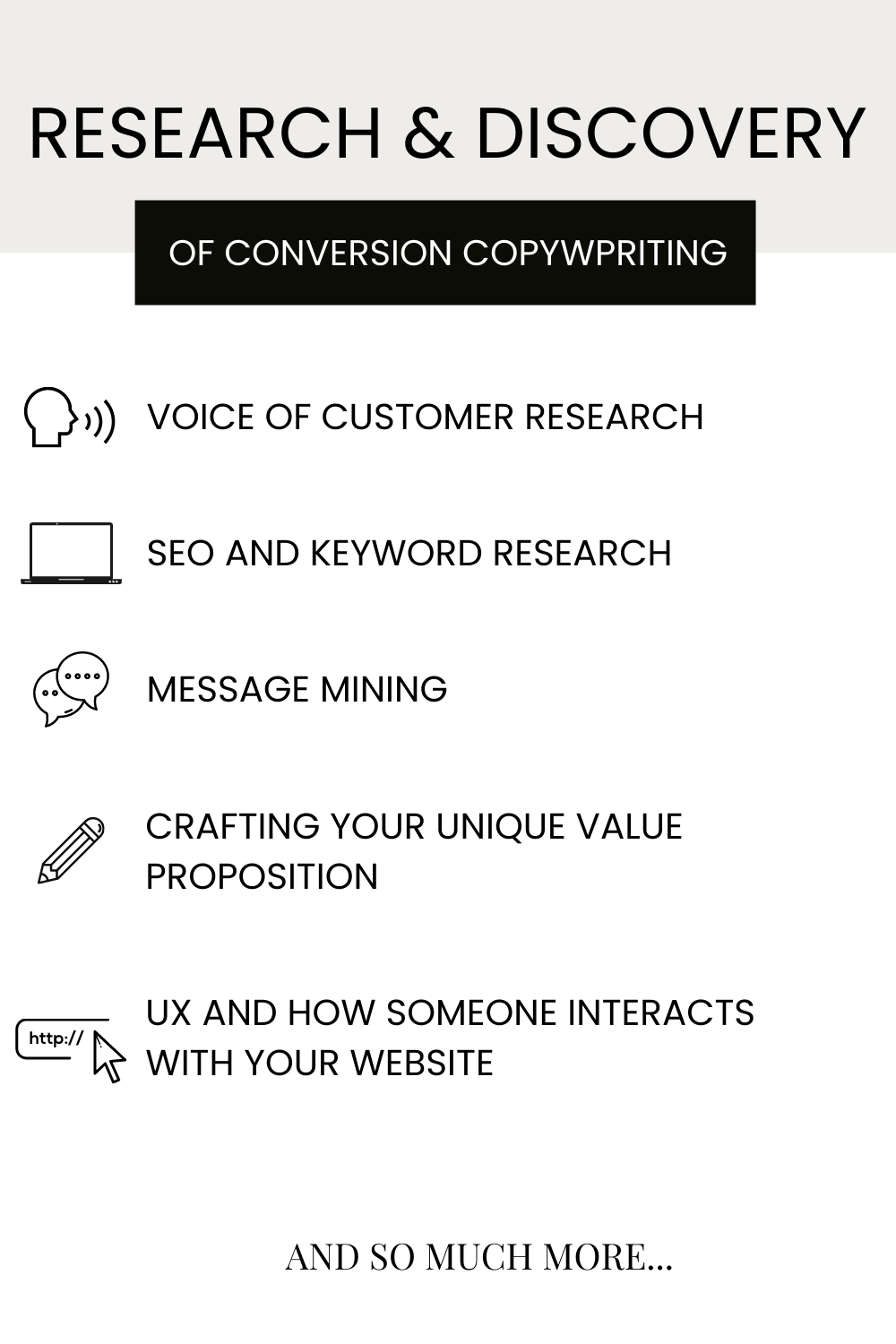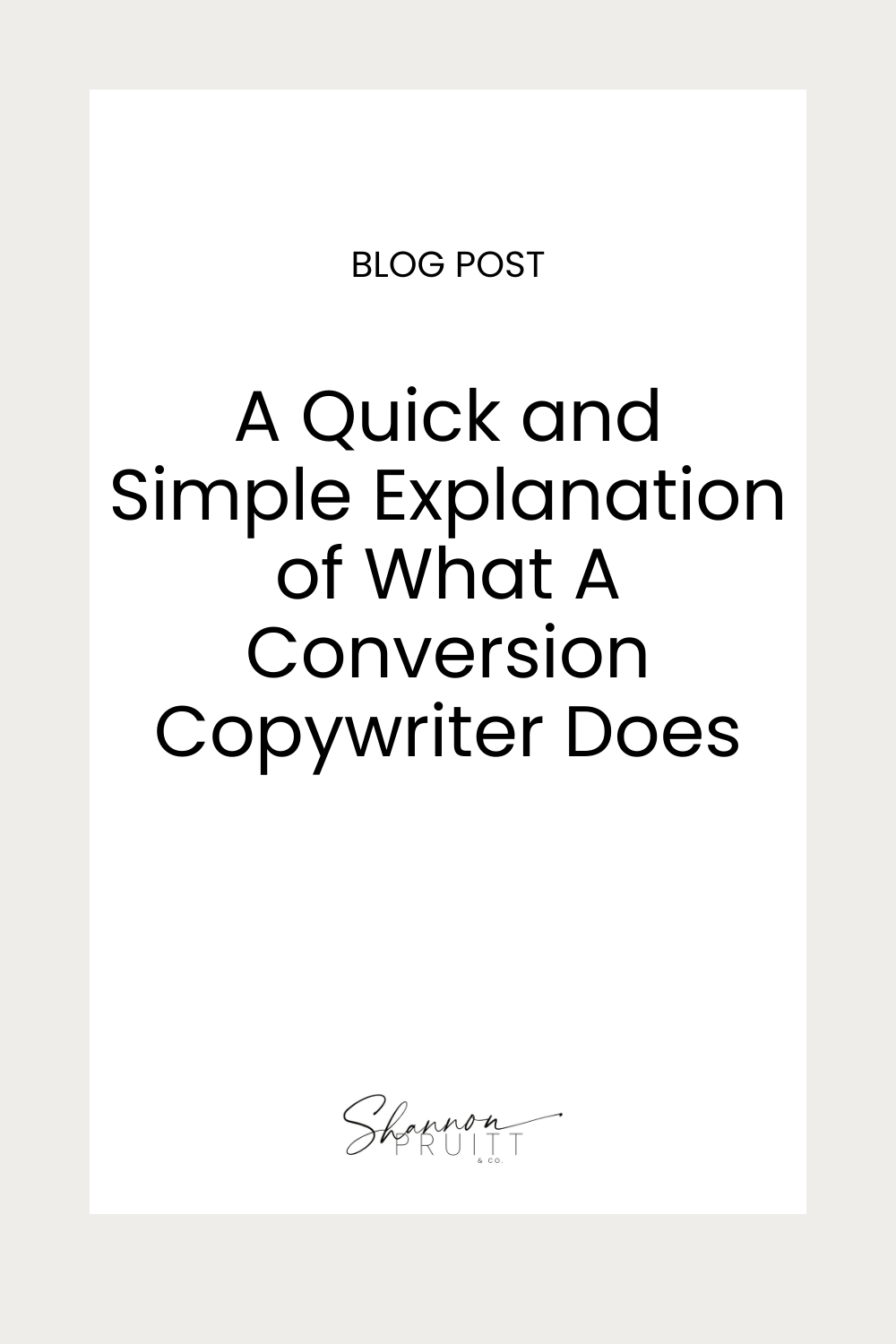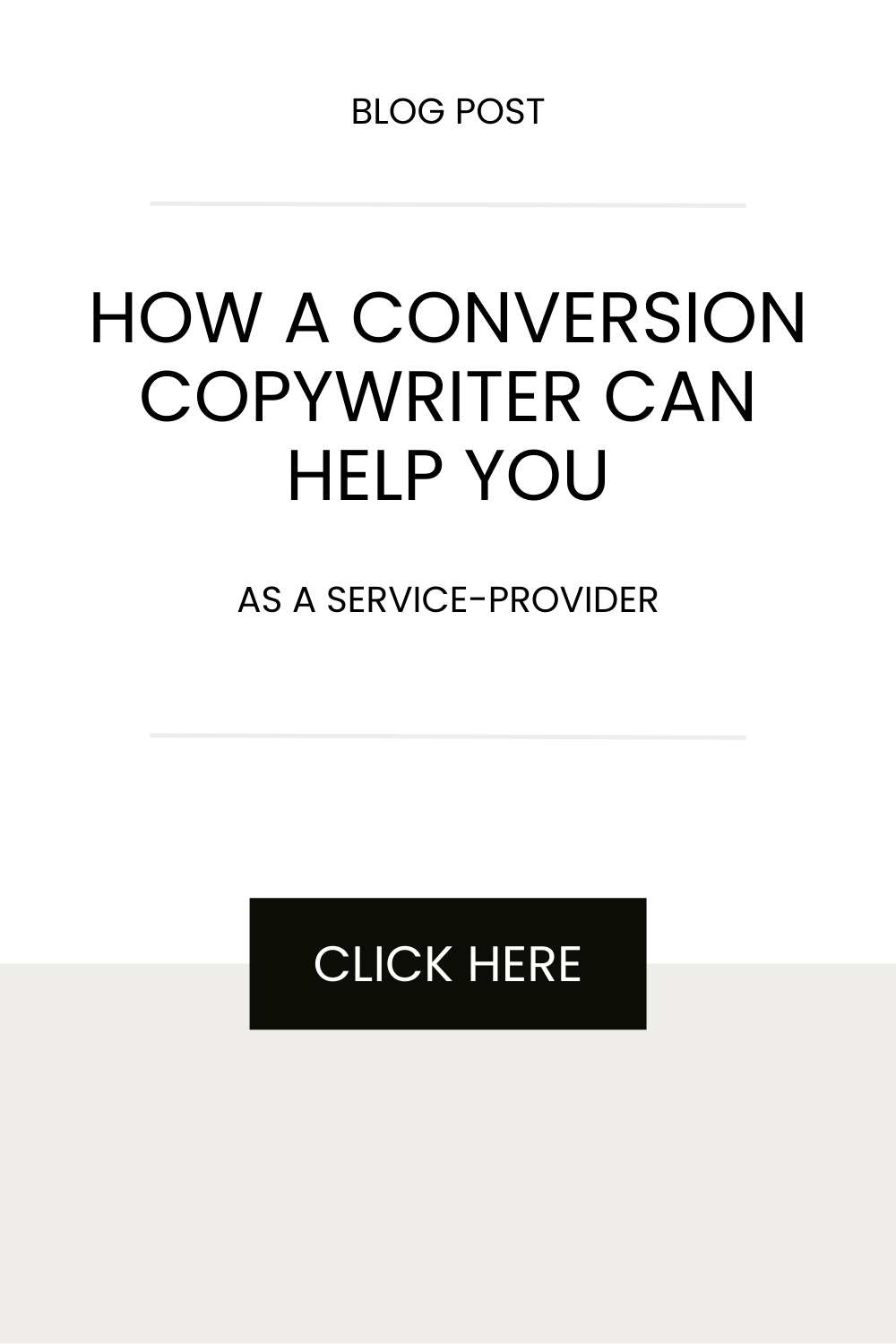
A Quick and Simple Explanation of What a Conversion Copywriter Does
As a modern business owner trying to market your services or products in the best way possible, you may have stumbled across the term “conversion copywriting” and wondered what the heck it actually is.
Last time I cleared up what copywriting is and what a copywriter does, (spoiler alert: it doesn’t involve adding the © in the footer of your website).
But today I want to talk to you about what conversion copywriting is. I want to give you an eagle’s eye view of what goes into the process.
What is Conversion Copywriting?
Joanna Wiebe, the original Conversion Copywriter and founder of Copyhackers, coined the term “conversion copywriting”.
Copyhackers defines conversion copywriting as:
“Conversion copywriting is copy that moves the reader to “yes” using voice-of-customer data, frameworks, formulas and proven persuasion techniques. Conversion copywriting motivates people to act & make a decision; takes the voice, tone and finding a unique value proposition and combines it with conversion (motivating) and process (research component) and presentation (what you’re saying and how you’re saying it).”
That’s such an on-point definition of the term that I don’t need to give you more of an explanation.
Are you a Conversion Copywriter?
I was going to address if I am a conversion copywriter at the end of this post. But because I’m focusing on my particular process, I felt the need to go ahead and explain what I do as a copywriter.
So to answer the question, “Are you a conversion copywriter?“, here’s my best answer:
Yes, but I also consider myself more than that because of who I work with.
I work with a lot of service-providers, real estate agents, wedding professionals, creatives, coaches, consultants, health and wellness experts, and other purpose-driven brands. Many of these people and brands have a story to tell, and I do that through their messaging.
Not every single piece of writing I craft for someone is meant to motivate someone to buy, sign up, or opt-in for something. Sometimes I’m writing copy for someone to tell their brand story in a creative fashion.
And because I’m also a web designer, I’m big into the creative direction for a brand.
Bottom line, for me, is that I’m most interested in writing and serving my clients in the best way possible.
So before any project kicks off, I’m digging into your goals (both long-term and short-term), your brand personality, your brand voice, your brand messaging, and your brand positioning. I’m doing a lot of voice of customer research and market research.
And then I’m combing through it all, culling it, and crafting it into your Brand Strategy.
And THEN the writing step kicks off.
So yes, like a strict conversion copywriter, I’m doing a lot of research, using formulas, and incorporating psychologically-triggered persuasion techniques.
But I’m also doing more than that… I’m telling your brand story in a creative, yet strategic, way <<<and that’s the kicker for my clients.
What goes into conversion copywriting? What’s all this research you talk about?
To be able to know what’s going to motivate someone to take an action, you need to know where they are. Where their mindset is. This involves a lot of research and discovery.Some of that research includes:
-
voice of customer research
-
SEO and keyword research
-
message mining
-
crafting of your unique value proposition (aka your secret sauce)
-
UX and how someone interacts with your website
My copywriting process looks like this:
-
Brand Strategy Workshop
-
Interviews, Surveys, and Polls
-
Client or Customer Reviews and Testimonials
-
Review Mining
-
Message Mining
-
SEO and Keyword Research
-
Development of Brand Strategy Book with Brand Messaging Style Guide
-
Writing the Copy
-
Editing the Copy
-
Wire Framing the Copy
It’s going to look different for every copywriter, but that’s my process. I’ll dig into a little more in-depth in another post.
The last step (kind of) is testing it.
All that research and writing serves one goal: to motivate someone to take action.
But how do you know if your copy is doing its job? You test it. You experiment with it. You make sure you nailed it.
And—this is why I said it’s “kind of” the last step—you adjust where necessary.
If something isn’t performing well, you adjust it.
Copywriting involves basing decisions off typical human behavior and psychology. And with the right amount of research and discovery, the right writing skills, with the right copywriter, you can nail your copy so perfectly that your visitor reads it and yells, “YES! THIS IS WHO I WANT!”
You might also be interested in…


